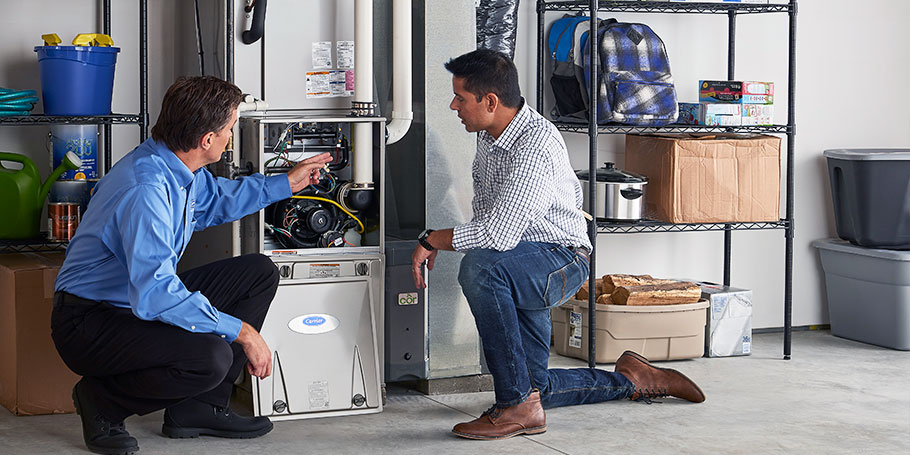A well-maintained furnace is crucial for keeping your home warm and comfortable during the colder months. However, like any other appliance, furnaces can experience issues over time that require professional repair. Whether your furnace is making strange noises, failing to heat your home properly, or showing signs of wear and tear, knowing when and how to seek furnace repair services is essential. This guide will cover common furnace problems, the repair process, costs, and tips for choosing the right furnace repair service.
Common Furnace Problems
Furnaces can develop various issues that affect their performance. Here are some of the most common problems homeowners encounter:
- Inconsistent Heating: If some rooms in your home are warmer or colder than others, it could indicate a problem with your furnace’s blower motor, thermostat, or ductwork.
- No Heat or Insufficient Heat: A furnace that does not produce heat or generates insufficient heat may have a malfunctioning thermostat, ignition system, or gas valve.
- Strange Noises: Unusual noises like banging, rattling, or squealing can indicate a range of issues, from loose components to a failing blower motor or cracked heat exchanger.
- Pilot Light or Ignition Problems: If the pilot light or ignition system fails, the furnace may not start or operate reliably. This could be due to a faulty thermocouple, electronic ignition, or clogged burners.
- Frequent Cycling: A furnace that frequently turns on and off, or “short cycles,” may have a dirty air filter, an oversized unit, or thermostat issues.
- High Energy Bills: A sudden increase in energy bills without any change in usage could indicate that your furnace is running inefficiently due to underlying problems.
The Furnace Repair Process
When your furnace starts showing signs of trouble, a professional repair service can help restore it to optimal condition. Here’s what you can expect during the furnace repair process:
- Initial Inspection and Diagnosis: A qualified technician will inspect your furnace to identify the source of the problem. This may involve checking the thermostat, blower motor, burners, heat exchanger, and other components.
- Detailed Explanation and Cost Estimate: Once the issue is diagnosed, the technician will explain the problem and provide an estimate of the repair costs. They may also suggest any additional maintenance that could prevent future issues.
- Repair and Replacement: The technician will proceed with the necessary repairs, whether it involves replacing a faulty part, cleaning dirty components, or fixing electrical connections. In some cases, replacement of certain parts may be required.
- Testing and Calibration: After the repair is complete, the technician will test the furnace to ensure it operates correctly and efficiently. They will check for proper airflow, accurate thermostat settings, and any signs of remaining issues.
- Final Walkthrough: The technician will provide a walkthrough of the work performed and offer tips for maintaining your furnace to avoid future problems.
Cost Factors for Furnace Repair
The cost of furnace repair can vary depending on several factors, including:
- Type of Repair Needed: The cost will depend on the type and complexity of the repair. Minor issues, like replacing a thermostat or cleaning a clogged burner, will generally cost less than more extensive repairs, such as replacing a blower motor or heat exchanger.
- Parts and Labor: The cost of replacement parts, such as a thermocouple or igniter, will affect the overall repair cost. Labor costs can vary based on the technician’s experience and the time required to complete the repair.
- Age and Condition of the Furnace: Older furnaces may require more frequent repairs or parts that are harder to find, which can increase costs.
- Service Provider Rates: Rates can vary depending on the HVAC company you choose, their level of expertise, and whether the service is provided during regular business hours or as an emergency repair.
Choosing the Right Furnace Repair Service
Finding a reliable and experienced furnace repair service is essential to ensure your furnace is fixed correctly and efficiently. Here are some tips to help you choose the right provider:
- Look for Experience and Certifications: Choose a service provider with a proven track record in furnace repair. Verify that their technicians are certified by organizations such as NATE (North American Technician Excellence) or other reputable bodies.
- Read Customer Reviews: Check online reviews and testimonials to gauge the company’s reputation for quality work and customer service. Positive feedback from previous customers is a good indicator of reliability.
- Ask About Service Warranties: Reputable companies should offer warranties on parts and labor, ensuring you are protected if further issues arise after the repair.
- Get Multiple Quotes: Obtain quotes from several providers to compare prices, services, and timelines. This can help you find a provider that fits your budget and repair needs.
- Verify Insurance and Licenses: Ensure the HVAC company is licensed and insured, protecting you from liability in case of accidents or damages during the repair process.
Furnace repair is an important aspect of maintaining your home’s comfort and safety during the colder months. By understanding common furnace problems, the repair process, and the factors influencing repair costs, you can make informed decisions about when to seek professional help. Remember to choose a reputable and experienced service provider to ensure your furnace is repaired correctly and efficiently, keeping your home warm and cozy all winter long.
Contact us today for professional furnace repair services or to schedule a maintenance check-up for your heating system.


